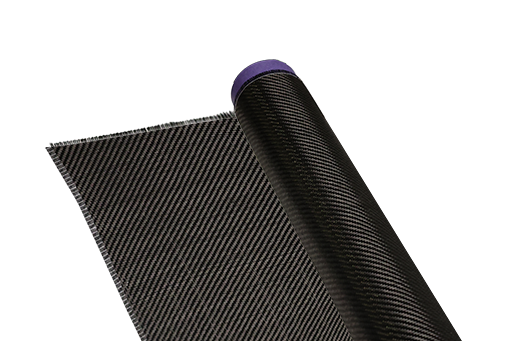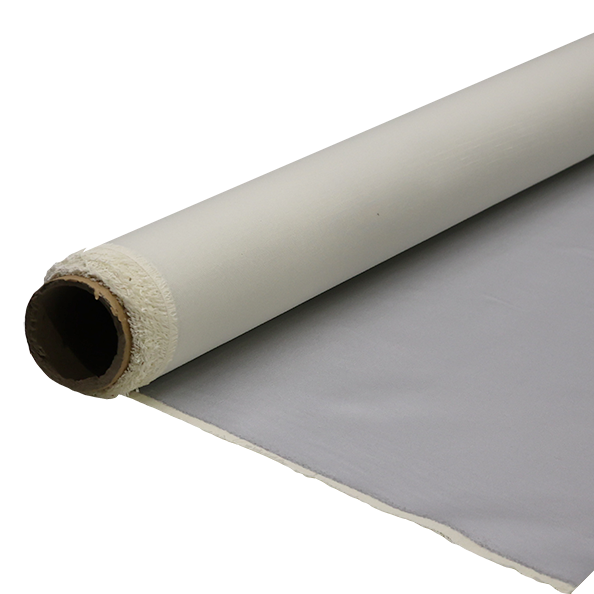Мировой экспорт композитных материалов достиг рекордного уровня во втором квартале
-
Оглавление
“Global Composite Exports Surge to Record Heights in Q2!”
In the second quarter of 2023, global composite exports reached an unprecedented high, reflecting a robust demand for composite materials across various industries. This surge can be attributed to advancements in manufacturing technologies, increased applications in sectors such as aerospace, automotive, and construction, and a growing emphasis on lightweight and durable materials. The record-breaking figures highlight the resilience of the global supply chain and the expanding market for composites, positioning them as a critical component in the transition towards more sustainable and efficient production practices.
Global Composite Exports Surge: Key Factors Behind the Record High in Q2
In the second quarter of 2023, global composite exports reached an unprecedented high, marking a significant milestone in international trade. This surge can be attributed to a confluence of factors that have collectively enhanced the demand for composite materials across various industries. As economies around the world continue to recover from the disruptions caused by the COVID-19 pandemic, the resurgence in manufacturing and construction activities has played a pivotal role in driving this growth.
One of the primary catalysts for the increase in composite exports is the rising demand for lightweight and durable materials in sectors such as aerospace, automotive, and construction. Composites, known for their superior strength-to-weight ratio, have become increasingly essential in the production of fuel-efficient vehicles and advanced aircraft. As manufacturers strive to meet stringent environmental regulations and consumer preferences for sustainability, the shift towards composite materials has become more pronounced. Consequently, countries that specialize in the production of these materials have seen a marked increase in export volumes, contributing to the overall record high.
Moreover, technological advancements in composite manufacturing have significantly improved production efficiency and reduced costs. Innovations such as automated fiber placement and advanced resin systems have enabled manufacturers to produce high-quality composites at a faster pace. This efficiency not only meets the growing demand but also enhances the competitiveness of composite products in the global market. As a result, countries that have invested in these technologies are reaping the benefits, with their exports experiencing substantial growth.
In addition to technological improvements, the geopolitical landscape has also influenced global composite exports. Trade agreements and partnerships have facilitated easier access to international markets, allowing producers to expand their reach. For instance, the establishment of free trade agreements among key players in the composite industry has reduced tariffs and trade barriers, fostering a more conducive environment for export activities. This has enabled countries with robust composite manufacturing capabilities to capitalize on new opportunities, further propelling export figures to record levels.
Furthermore, the increasing focus on renewable energy and sustainable practices has spurred demand for composites in the wind energy sector. As countries invest heavily in renewable energy infrastructure, the need for lightweight and durable materials for wind turbine blades has surged. This trend has not only bolstered exports from countries specializing in composite production but has also underscored the versatility of these materials in addressing contemporary challenges related to energy and sustainability.
As we analyze the factors contributing to the record high in global composite exports, it is essential to recognize the role of market dynamics and consumer preferences. The growing awareness of the benefits of composites, coupled with the push for innovation and sustainability, has created a favorable environment for export growth. Industries are increasingly prioritizing materials that offer both performance and environmental benefits, leading to a shift in purchasing decisions that favors composites.
In conclusion, the remarkable surge in global composite exports during the second quarter of 2023 can be attributed to a combination of rising demand across various sectors, technological advancements, favorable trade conditions, and a growing emphasis on sustainability. As these trends continue to evolve, it is likely that the composite industry will maintain its upward trajectory, further solidifying its position as a critical player in the global economy. The record high in exports not only reflects the resilience of the industry but also highlights the transformative potential of composite materials in shaping the future of manufacturing and construction.
Impact of Global Composite Exports on International Trade Dynamics

The recent surge in global composite exports, which reached a record high in the second quarter of the year, has significant implications for international trade dynamics. This remarkable growth reflects not only the increasing demand for composite materials across various industries but also highlights the evolving landscape of global trade relationships. As countries strive to enhance their manufacturing capabilities and innovate in product development, the rise in composite exports serves as a barometer for economic health and competitiveness on the world stage.
One of the primary impacts of this increase in composite exports is the shift in trade balances among exporting and importing nations. Countries that have invested in advanced composite manufacturing technologies are reaping the benefits of their strategic decisions. For instance, nations with robust aerospace, automotive, and construction sectors are experiencing a surge in demand for lightweight, durable materials that composites provide. This demand not only bolsters their export figures but also strengthens their positions in global supply chains. Consequently, countries that previously relied heavily on traditional materials are now compelled to adapt, either by enhancing their own composite production capabilities or by forming strategic partnerships with leading exporters.
Moreover, the rise in composite exports is fostering greater collaboration between nations. As countries recognize the advantages of composites in reducing weight and improving energy efficiency, they are increasingly engaging in joint ventures and research initiatives. This collaborative spirit is essential for driving innovation and ensuring that the benefits of composite materials are maximized across various applications. For example, partnerships between developed and developing nations can facilitate technology transfer, enabling emerging economies to participate more actively in the global composite market. This not only diversifies the sources of composite materials but also promotes sustainable development by encouraging the use of environmentally friendly manufacturing processes.
In addition to fostering collaboration, the record high in composite exports is reshaping competitive dynamics within international markets. As more countries enter the composite production arena, competition intensifies, leading to advancements in technology and reductions in costs. This competitive pressure can drive innovation, prompting manufacturers to develop new composite formulations and applications that meet the evolving needs of consumers. Consequently, industries such as renewable energy, where lightweight and strong materials are crucial for efficiency, stand to benefit significantly from these advancements. The ripple effect of this innovation can lead to enhanced product offerings and improved performance across various sectors.
Furthermore, the increase in composite exports is influencing trade policies and regulations. Governments are recognizing the strategic importance of composites in achieving economic growth and sustainability goals. As a result, there is a growing emphasis on creating favorable trade environments that support the composite industry. This includes reducing tariffs on composite materials, investing in research and development, and implementing standards that promote quality and safety. Such policy shifts not only encourage domestic production but also attract foreign investment, further integrating countries into the global composite supply chain.
In conclusion, the record high in global composite exports during the second quarter signifies a pivotal moment in international trade dynamics. The implications of this growth extend beyond mere economic figures; they encompass shifts in trade balances, collaborative efforts among nations, competitive pressures, and evolving trade policies. As the demand for composite materials continues to rise, it is clear that their impact on global trade will only deepen, shaping the future of industries and economies worldwide.
Future Trends: What the Record High in Composite Exports Means for the Industry
The recent surge in global composite exports, which reached a record high in the second quarter, signals a transformative period for the industry. This unprecedented growth not only reflects the increasing demand for composite materials across various sectors but also indicates a shift in manufacturing practices and consumer preferences. As industries continue to embrace lightweight, durable, and versatile materials, the implications for the future of composite exports are profound.
One of the most significant trends emerging from this record high is the growing emphasis on sustainability. As environmental concerns become more pressing, manufacturers are increasingly seeking eco-friendly alternatives to traditional materials. Composites, particularly those derived from renewable resources or designed for recyclability, are gaining traction. This shift is not merely a response to regulatory pressures; it is also driven by consumer demand for sustainable products. Consequently, companies that prioritize sustainable practices in their composite production are likely to gain a competitive edge in the global market.
Moreover, the rise in composite exports is closely linked to advancements in technology. Innovations in manufacturing processes, such as automated production techniques and improved material formulations, have enhanced the efficiency and performance of composite materials. These technological advancements enable manufacturers to produce composites that meet the stringent requirements of various industries, including aerospace, automotive, and construction. As these technologies continue to evolve, they will likely lead to even greater efficiencies and capabilities, further propelling the growth of composite exports.
In addition to technological advancements, the expansion of global supply chains plays a crucial role in the increasing volume of composite exports. As companies seek to optimize their operations, they are increasingly looking beyond their domestic markets for sourcing materials and components. This globalization of supply chains allows for greater flexibility and responsiveness to market demands. Consequently, manufacturers can tap into new markets and diversify their customer bases, which is essential for sustaining growth in an increasingly competitive landscape.
Furthermore, the record high in composite exports may also indicate a shift in geopolitical dynamics. As countries strive to bolster their manufacturing capabilities and reduce reliance on imports, there is a growing focus on developing domestic composite production. This trend could lead to increased investment in local manufacturing facilities and research and development initiatives, ultimately fostering innovation within the industry. As nations prioritize self-sufficiency, the landscape of global trade in composites may undergo significant changes, with emerging markets playing a more prominent role.
Looking ahead, the implications of this record high in composite exports extend beyond immediate economic benefits. The increased demand for composites is likely to drive further research into new applications and material properties, paving the way for breakthroughs in various fields. For instance, the aerospace industry may see the development of lighter and stronger materials that enhance fuel efficiency, while the automotive sector could benefit from composites that improve safety and performance.
In conclusion, the record high in global composite exports in the second quarter serves as a harbinger of significant changes within the industry. As sustainability, technological advancements, globalization, and geopolitical shifts shape the future of composite materials, stakeholders must remain agile and responsive to these trends. By embracing innovation and prioritizing sustainable practices, the composite industry is poised to thrive in an evolving global marketplace, ultimately benefiting manufacturers, consumers, and the environment alike.
Вопросы и ответы
1. **What was the main reason for the record high in global composite exports in Q2?**
The record high in global composite exports in Q2 was primarily driven by increased demand in various industries, including aerospace, automotive, and construction, as well as advancements in composite manufacturing technologies.
2. **Which regions contributed most significantly to the increase in composite exports?**
North America and Asia-Pacific regions were the most significant contributors to the increase in composite exports, with strong growth reported in countries like the United States, China, and Japan.
3. **What impact does the rise in composite exports have on the global economy?**
The rise in composite exports positively impacts the global economy by boosting trade balances, creating jobs in manufacturing and related sectors, and fostering innovation in material science and engineering.Global composite exports reached a record high in Q2, driven by increased demand across various sectors and improved supply chain efficiencies. This surge reflects a robust recovery in international trade, highlighting the resilience of global markets despite ongoing challenges. The growth in exports not only boosts economic prospects for exporting countries but also indicates a positive trend in global economic activity.











